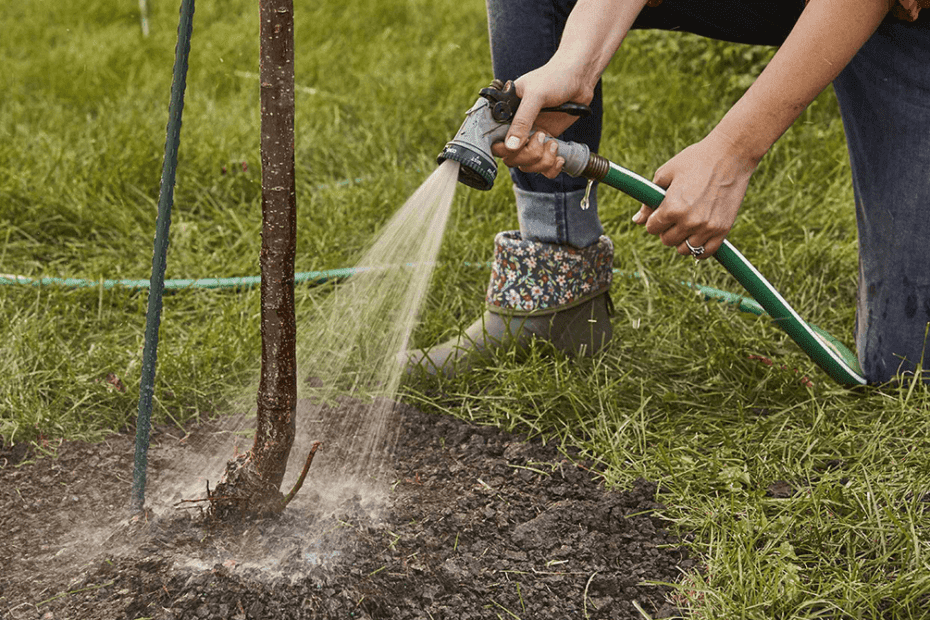As the vibrant colors of spring burst forth, nature awakens from its slumber, and the world celebrates the glorious rebirth of life. Amidst this symphony of rejuvenation, trees stand tall, branches reaching for the sky, roots deeply embedded in the nurturing earth. Yet, hidden beneath their majestic allure lies a crucial question, one that whispers softly amidst the rustling leaves – when should we begin to quench their thirst, to bestow upon them the elixir of life? Join us as we unravel the gentle secrets of nature’s calendar, exploring the delicate dance between temperatures and soil moisture, and uncovering the perfect moment to commence watering our arboreal companions in the enchanting season of spring. In this guide, we aim to shed light on this age-old riddle, illuminating the path towards a flourishing, verdant landscape. So, step into the timeless realm of trees, where patience and attentiveness intertwine, and discover the ideal time to nourish our leafy friends, ensuring their growth surges forth in harmony with the gentle progression of this wondrous season.
Keep Your Trees Hydrated: When and How to Start Watering in Spring
As spring approaches, it is essential to ensure the health and vitality of your trees by keeping them properly hydrated. Adequate watering not only prevents drought stress but also promotes robust growth and helps trees withstand the heat of summer. But when should you start watering your trees in spring, and how should you go about it? Let’s explore some tips and guidelines to help you ensure your trees receive the moisture they need to thrive.
Timing is crucial when it comes to watering your trees in spring. As a general rule of thumb, you should begin watering once the soil starts to dry out, but before the trees show signs of stress. Monitor the soil moisture regularly by observing its color and texture. When the soil appears dry or slightly crumbly, it is time to water. Additionally, paying attention to weather conditions can help in determining when to start watering. Dry spells, high temperatures, or strong winds can cause soil to dry out faster, requiring you to initiate watering earlier.
| Features/Tips | Benefits |
|---|---|
| Deep watering: | Ensures water reaches the tree’s root system, promoting strong and healthy growth. |
| Mulching: | Helps retain soil moisture, reduces weed growth, and regulates soil temperature around the roots. |
| Consider tree age: | Younger trees require more frequent watering, while established trees can tolerate longer periods between watering. |

Factors to Consider Before Watering Your Trees in Spring
As the dormant winter months come to an end and spring rolls around, it’s important to evaluate when to start watering your trees. The changing weather conditions, soil moisture levels, and the specific needs of each tree species all play a significant role in determining the optimal time to begin watering. Here are a few key factors to consider before delving into the essential task of tree watering:
Weather Conditions
- Check the weather forecast to ensure there are no heavy rains or prolonged wet periods expected in the coming days. Overwatering can lead to root rot and other detrimental consequences for the health of your trees.
- Take into account the current temperature trends. If the days are continuously warm and the chance of frost has passed, it may be a good indication that your trees require additional hydration.
Soil Moisture Levels
- Before initiating any watering routine, inspect the soil around the tree base. A moisture meter can be useful in determining the moisture content at varying depths.
- If the soil is dry and crumbly, it indicates a need for water. However, if it is moist or waterlogged, it’s crucial to hold off watering until the soil has dried out a bit more to prevent suffocation of the roots.
Table: Features and Tips for Watering Trees in Spring
| Feature/Tips | Description |
|---|---|
| Tree Species | Some tree species have higher water requirement than others. Research the specific needs of your tree species to determine the appropriate watering schedule. |
| Root Depth | Understanding the depth of your tree’s root system is essential for effective watering. Water deep and slow to ensure the moisture reaches the roots. |
| Time of Day | Avoid watering during the hottest part of the day to prevent excessive evaporation. Watering in the morning or late afternoon provides adequate time for absorption. |

Signs to Watch Out for that Indicate It’s Time to Start Watering
As spring approaches and the trees awaken from their winter slumber, it’s crucial to pay attention to signs indicating it’s time to give them a good watering. Trees rely on water to thrive, and providing them with proper hydration will ensure their health and vitality throughout the growing season. Here are some :
- Wilting leaves: If you notice the leaves of your trees beginning to wilt or droop, it’s a clear sign that they need water. Lack of moisture can cause the leaves to wither and lose their vibrant green color.
- Cracked soil: Take a look at the soil around the base of your trees. If you see deep cracks forming, it’s a strong indicator that the ground is dry and in need of watering. The cracks occur as the soil dries out and contracts.
- Shallow root growth: Another sign to watch out for is shallow root growth. If you dig around the base of a tree and find most of the roots concentrated near the surface, it means the tree is struggling to find water deeper in the ground.
Ensur
ing your trees receive adequate water in the early days of spring is essential to establish a strong foundation for their growth. Here are some features and tips to help you in this process:| Feature | Tips |
|---|---|
| Soaker hoses | Wrap soaker hoses around the base of each tree, allowing water to slowly soak into the root zone without excessive runoff. |
| Mulching | Apply a layer of mulch around the trees to retain moisture and reduce weed growth. Avoid piling mulch against the trunk of the trees, as it can lead to rot. |
| Watering schedule | Create a regular watering schedule, taking into consideration the tree species, soil type, and weather conditions in your area. Aim for deep watering sessions rather than frequent shallow ones. |
By keeping a close eye on the signs that indicate the need for watering and following these helpful features and tips, you’ll be able to provide your trees with the hydration they deserve, ensuring their health and longevity throughout the spring season and beyond.


